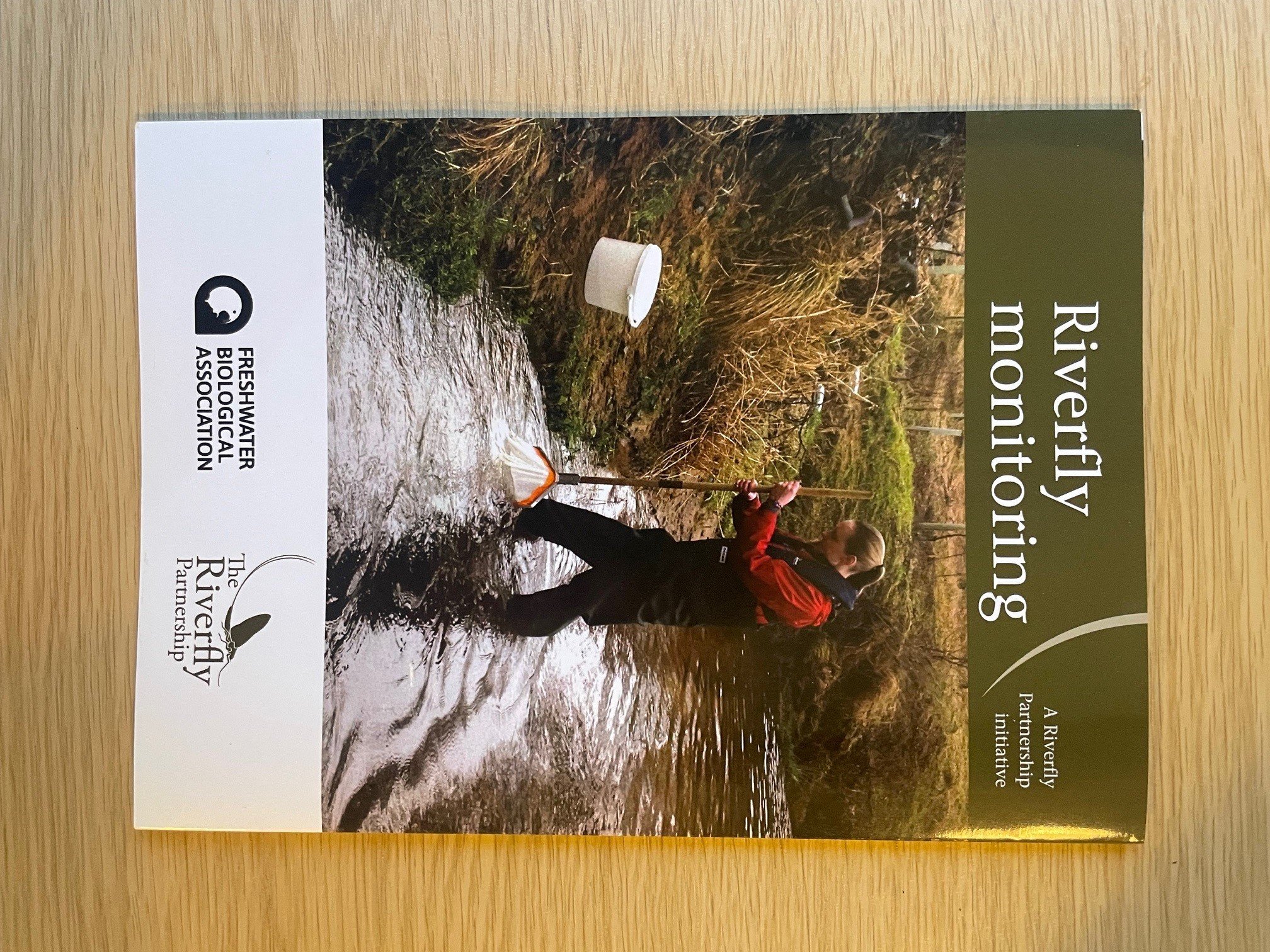Predicting nature recovery: a new vision for river restoration planning and ecosystem assessment
17 September, 2024
By Martin Wilkes
School of Life Sciences, University of Essex; m.wilkes@essex.ac.uk
Martin Wilkes is Senior Lecturer in Ecology and Environmental Microbiology at the University of Essex. Here, he reports on findings published with collaborators on a Policy Interface Fellowship he undertook with the Environment Agency, funded by the UKRI Landscape Decisions Programme. This research was published open-access in River Research and Applications by Wilkes et al. (2024).
Edited by Rachel Stubbington, Nottingham Trent University
Rachel is both a Fellow of the Freshwater Biological Association and long-standing Editor of FBA articles. If you would like to submit an article for consideration for publication, please contact Rachel at: rachel.stubbington@ntu.ac.uk
Introduction
In England, new laws intended to stem biodiversity loss place rivers at the heart of national efforts to promote nature recovery. For example, The Environmental Targets (Biodiversity) (England) Regulations 2023 set out the “species abundance target” which requires the government to halt the decline in species abundance by 2030 and reverse the decline by 2042. Among the 1,195 species contributing towards the target, 23% are riverine. But what does it take to protect and enhance river biodiversity in the face of rapid environmental change? That was the focus of our recent study (Wilkes et al. 2024), in which we support smarter, more resilient strategies for river restoration planning and ecosystem assessment through predictive modelling.
Why we need a predictive approach
River restoration has often aimed to return a system to its historical "reference condition" – a time before human impacts were as pervasive as they are today. But our analysis of data from English rivers spanning from 1991 to projections for 2042 indicated that this approach might not always be the most effective. Instead, our study suggests that we should be looking forward, using models that account for the changing conditions our rivers are facing.
In the past 50 years, river water temperatures have increased by 1.5°C (Orr et al. 2015), whilst floods and droughts once considered extreme are becoming the norm (Watts et al. 2015). Flow and temperature are two “master variables” influencing the survival and reproduction of riverine species. With the environment changing in such fundamental ways, the past is an increasingly poor guide to the future. We need to rethink how we plan river restoration and assess ecological status, leaving behind static reference conditions and focusing on what will sustain biodiversity in the future.
Harnessing the power of prediction
To move beyond static reference conditions we employed zero-inflated generalised Poisson models, statistical tools that deal with errors and biases in biodiversity data and thus enable robust predictions of how species respond to environmental change. By incorporating both historical data and projected future environmental changes, including in water temperature and flow anomalies, these models predict how species will fare under different climate scenarios.
One of our key insights is the critical role of nutrient management in river restoration. Excessive levels of nitrates and phosphates from agricultural runoff and sewage effluent can lead to eutrophication and other problems that limit biodiversity. Our models show that targeting reductions in the concentrations of these nutrients can significantly enhance the recovery of aquatic invertebrates, which in turn supports broader ecosystem health.
Addressing the challenges of a changing climate
Nutrient reduction is only part of the story. Our study also underscores the importance of addressing physical modification of river channels, such as weirs and embankments, which have long been used in efforts to support flood control and other human needs. We show that ambitious, large-scale action to remove these modifications could be crucial in promoting the recovery of many species (Fig. 1). Our models suggest that biodiversity across 86% of the river network would benefit from such measures.
Figure 1. Removal of channel modifications in the River Don, South Yorkshire. Credit: Terry Robinson. Source: https://www.geograph.org.uk/photo/877576. Copyright: Creative Commons Attribution-NonCommercial-ShareAlike 2.0 Generic (CC BY-NC-SA 2.0).
However, plans to implement large-scale restoration of modified river channels need to be flexible and forward-looking. In particular, restoration plans must be adaptable to the new reality of climate-change-driven extreme weather events, such as intense rainfall and prolonged heatwaves. Due to the increasing frequency and magnitude of such events, we may need to adapt water and land management strategies to protect both ecosystems and the human communities that they support. For example, our models more frequently identified the need for combined restoration actions, such as removal of channel modifications alongside reductions in nitrate concentrations, under the most pessimistic climate scenario.
Setting catchment-specific targets
Our research also highlights the efficiency gained by adopting a catchment-specific approach to target setting. Instead of applying a one-size-fits-all strategy, we found that tailoring river restoration targets to the specific conditions and challenges of each catchment could yield similar benefits to more intensive nationwide efforts. This catchment-specific approach would maximise the effectiveness of restoration whilst making better use of limited resources.
For instance, in catchments in which nutrient enrichment is the dominant issue, focusing efforts on reducing agricultural runoff might be the most efficient path to recovery (Fig. 2). In other areas, where physical modifications are more detrimental, restoring natural fluvial forms and processes could be key. By understanding the unique needs of each catchment, we can prioritise the actions that are most likely to succeed, leading to biodiversity outcomes that are more resilient to future climate change.
Figure 2. Restoration actions needed to maximise the probability of achieving the species abundance target, according to our predictive models. The morphology action involves removal of all channel modifications. The nitrates and TDP (total dissolved phosphorus) actions involve reducing concentrations of these nutrients by 50% compared to long-term averages. White areas are those for which a lack of data prevented predictive modelling.
Reimagining ecosystem assessment
Our findings also have implications for how we assess the health of river ecosystems. Traditional assessments that rely on historical reference conditions may no longer provide an accurate measure of ecological status (in the sense of the Water Framework Directive), especially in the face of rapid environmental change. Even a “good” river today is unlikely to look the same as it did in the past. As such, we advocate for the use of predictive models that account for ongoing shifts in water temperature, flow and other factors, to allow river health to be tracked in real-time, rather than against an outdated baseline.
Using powerful predictive models, we can assess ecological quality against the species community expected if restoration targets were achieved. To demonstrate this, we compared the percentage of water bodies in good ecological status for species abundance under our predictive method compared to the traditional method (Fig. 3). Although most water bodies still failed to achieve good status, more were good or closer to good under our climate-aware approach. Rather than representing a reduction in our ambitions for ecological quality, we argue that this approach is a more realistic assessment of ecosystems that are progressively moving away from historical reference conditions (Johnson et al. 2024). These results should give us renewed optimism that investment in river restoration can enable failing water bodies to achieve good status.
Figure 3. The percentage of modelled water bodies classified as being in at least “good” ecological status under our climate-aware (predictive) approach compared to the traditional method, based on a notional observed/expected boundary between good and moderate status of 0.86 (WFD-UKTAG, 2014).
Delivering Nature Recovery
According to our models, legally binding targets to halt the decline in species abundance by 2030, and then reverse the decline by 2042, will be challenging to deliver. Even if nutrient concentrations were reduced by 50% and all channel modifications were removed in every single river, there is only a 72% probability of achieving the 2030 target. For the 2042 target, the probability is 64% under the most optimistic climate change scenario. Given that a 50% probability equates to the flip of a coin, achieving the targets is by no means a certainty.
Conclusion
As England works towards reversing biodiversity decline by 2042, our study offers a glimpse of a smarter, climate-aware approach to river restoration planning and ecosystem assessment. By embracing predictive modelling, we can make better use of England’s exceptional freshwater monitoring data, generating insights to inform management actions that prepare rivers for the future. But understanding what it takes to deliver nature recovery goals, and to track our progress towards them, is just the first step. Getting the job done will require significant investment and a long-term commitment to reversing biodiversity loss.
References
Johnson, A.M. et al. 2024. Assessing the use of RIVPACS-derived invertebrate taxonomic predictions for river management. bioRxiv. https://doi.org/10.1101/2024.06.14.599001
Orr, H.G. et al. 2015. Detecting changing river temperatures in England and Wales. Hydrological Processes 29: 752–766. https://doi.org/10.1002/hyp.10181
The Environmental Targets (Biodiversity) (England) Regulations 2023 (SI 2023/91). https://www.legislation.gov.uk/uksi/2023/91/made
Watts, G. et al. 2015. Climate change and water in the UK–past changes and future prospects. Progress in Physical Geography 39: 6–28. https://doi.org/10.1177/0309133314542957
WFD-UKTAG (Water Framework Directive – United Kingdom Technical Advisory Group) 2014. UKTAG River assessment method. Benthic invertebrate fauna. Invertebrates (general degradation): Whalley, Hawkes, Paisley & Trigg metric. WFD-UKTAG. Available here.
Wilkes, M.A. et al. 2024. Predicting nature recovery for river restoration planning and ecological assessment: A case study from England, 1991–2042. River Research and Applications. https://doi.org/10.1002/rra.4282
Further reading
The Freshwater Biological Association publishes a wide range of books and offers a number of courses throughout the year. Check out our shop here.
Get involved
Our scientific research builds a community of action, bringing people and organisations together to deliver the urgent action needed to protect freshwaters. Join us in protecting freshwater environments now and for the future.












